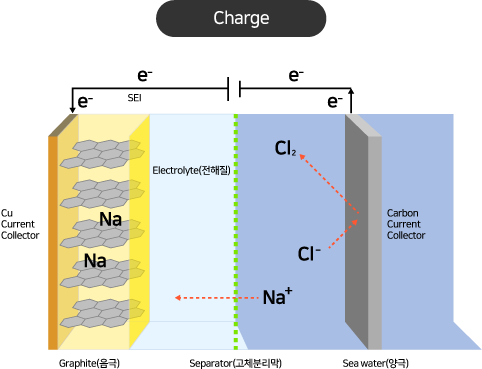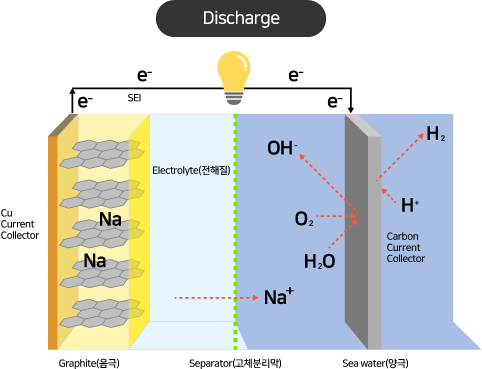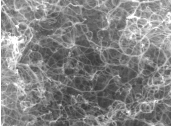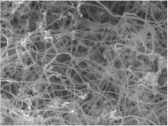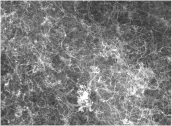Functionality Carbon black
-
-
Hetero atom-CB
Phosphorus
Sulfur
Nitrogen
-
Metal-CB
Platinum
Tin
-
Silicon-CB
-
Functionality Carbon black
Hetero atom-CB
-
TEM image of the
synthesized materialSpherical particles are ring-shaped
Forms a channel through which sodium ions can be transported
-
EDS mapping of the
synthesized materialEven distribution of C, S and N elements in the carbon matrix
-
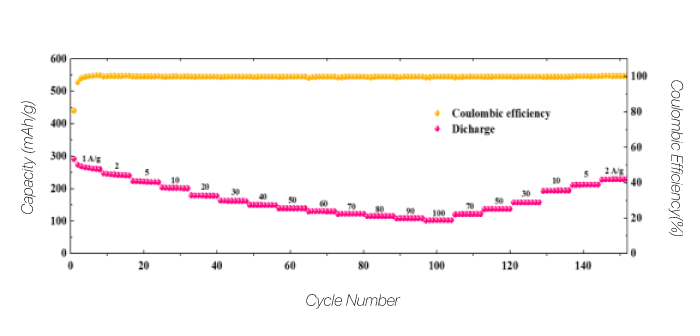
-
Superior
Capacity Retention
Power characteristics
Achieve a reversible capacity of 110mAh/g at 100A
Suitable for high power devices
-
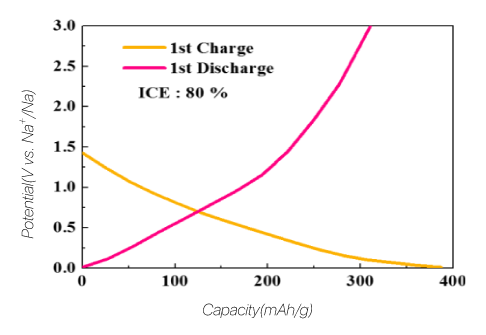
-
High initial
Coulombic Efficiency
First cycle Coulomb efficiency
Commercialization condition in LiB: 80% or higher
Generally reported level in SiB: 40-50%
SiB world’s best level: 60~70%
-
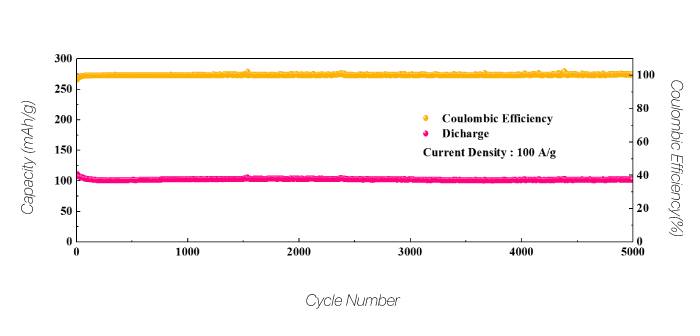
-
Ultrahigh
Cycling Performance
Lifespan characteristics
5,000 cycles at 100 A/g
Achieved a lifespan of more than 5,000 cycles at ultra-high current
-
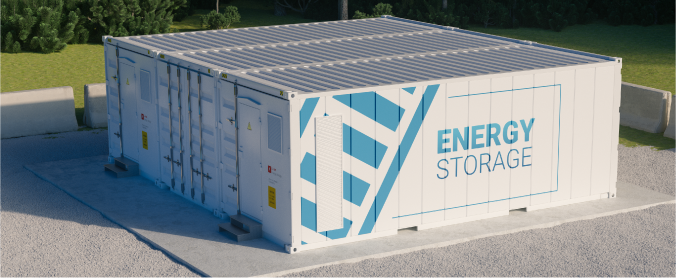
-
Features of
Sodium ion batteriesOperate with the same chemistry as the lithium-ion battery
Possible to use the existing production line as it is
Aluminum foil, not copper foil, can also be used for anodes, making the unit price cheaper
-
Lithium ion battery
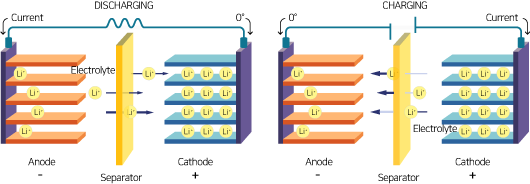
-
Sodium ion battery
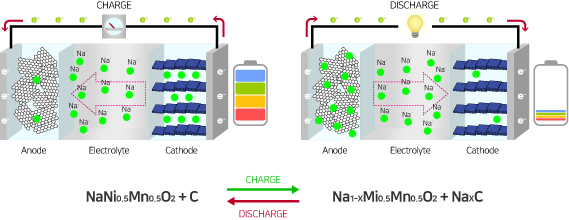
-

-
Seawater battery
When charging, sodium ions of seawater are extracted and stored as an anode, and when discharging, water is used as an anode to react to generate electricity
-
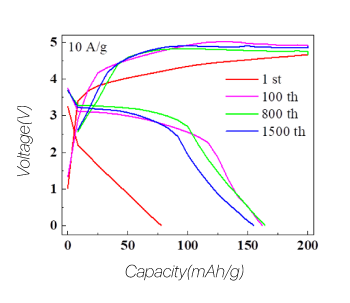
-
Seawater battery
FULL CELL TESTShows lifespan feature of 1500 cycles as well as a high capacity
of 150mAh/g even at ultra-high currents of 10A/gChecked the possibility of using seawater batteries
It can be used to develop other energy materials such as fuel cells and potassium ion cells just by replacing solvents and solutes using the developed process technology.
Functionality Carbon black
Metal-CB
-
TEM image of the
synthesized material -
EDS mapping of the
synthesized material
Functionality Carbon black
Silicon-CB
-
TEM image of the
synthesized material -
EDS mapping of the
synthesized material
-
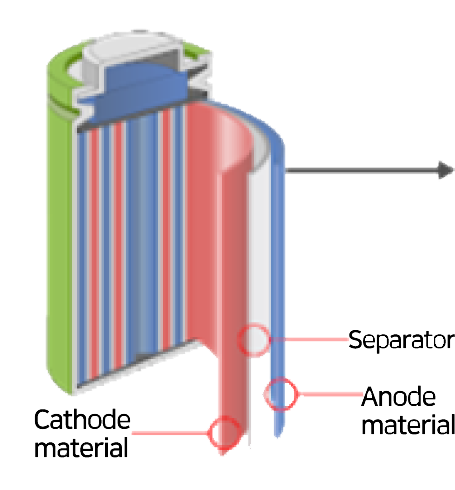
Lithium secondary battery
-
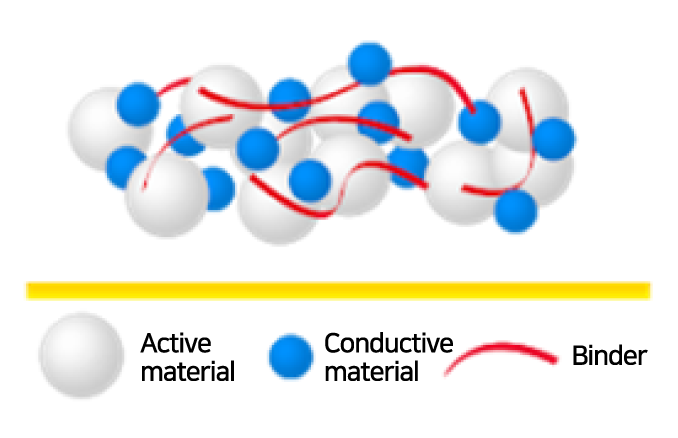
The ratio of silicon included
in the active material: about 3~5% -
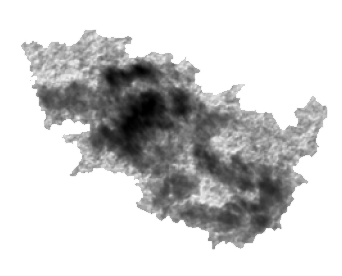
Carbon-silicon material:
conductive material (+active material)
-
General ratio
-

Active material : Conductive material : Binder = 80 : 10 : 10
It acts as a basic conductive material and increases capacity even with the existing ratio
-
Special ratio
-

Active material : Conductive material : Binder = ex) (60~80) : (10~30) : 10
Basic conductive material role + Active material role is possible, so stable cycling performance
and increase in reversible capacity based on the change in contents of conductive material
-
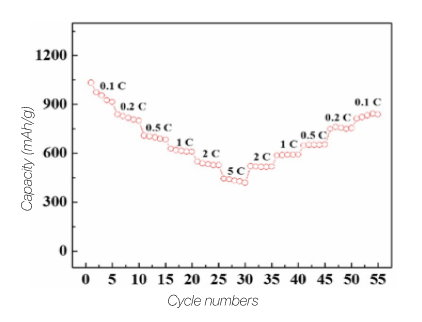
-
Best
Capacity Retention
Reversible capacity
(applied anode material)First cycle Coulomb efficiency: 55% or more
1C (372 mAh/g) standard: 600 mAh/g
-
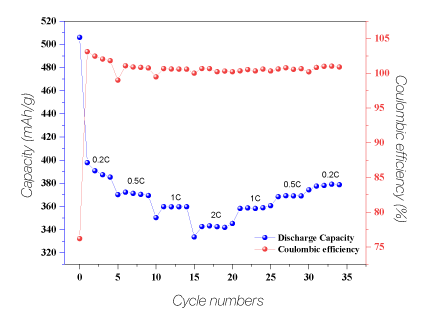
-
Best
Capacity Retention
Reversible capacity
(applied conductive material)First cycle Coulomb efficiency: 70% or more
1C (372 mAh/g) standard: 360 mAh/g
Carbon Nano Tube
-
-
CNT
T-CNT
A-CNT
-
CNT-CB
CB-CNT
CB-CNF
-
Carbon Nano Tube
CNT
-
-
-
-
Diameter
20~40nm
-
Length
5~10um
-
Purity
>99wt%
-
-
-
Specific surface area
>40m2/g
-
I.C.E (initial coulombic efficiency)
87.2%
-
-
Carbon
Nano Tube -
Good dispersion of silicon and C is shown at EDS mapping
Maximizes efficiency when applying the composite as a conductive material
It is a new material that is currently in the spotlight in various industries
with excellent mechanical characteristics, electrical selectivity, field emission characteristics, and high efficiency hydrogen storage medium characteristics
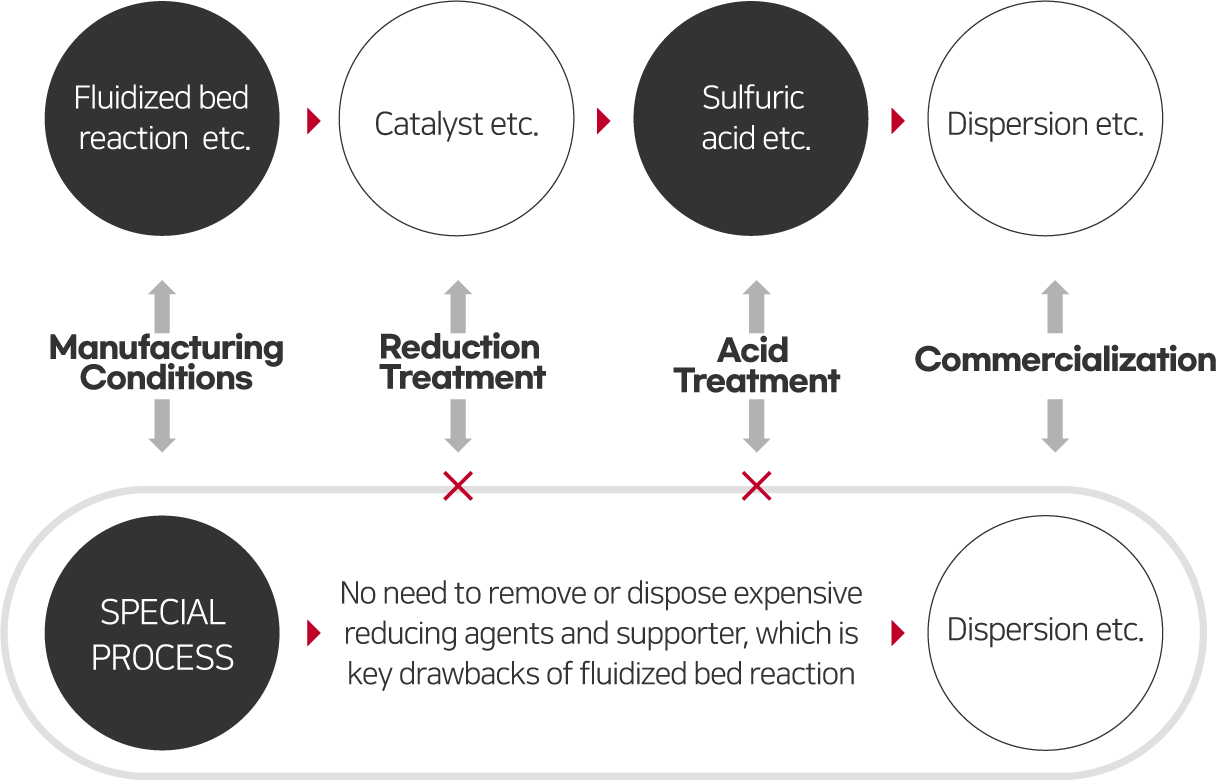
Manufacturing technology of low-cost carbon
nano tubes (CNT) using alkali metals
-
Existing CNT manufacturing technology
01 Organometallic compounds such as Fe, Ni, Co, etc. are used as catalyst metals
It costs a lot because of their limited reserves
( $14.000/ton for Ni)02 Need a process to treat acid with an aqueous acid solution such as sulfuric acid and nitric acid
Work stability problems, pollutant treatment problems and high cost problems are incurred
-
Developed CNT manufacturing technology
01 Alkali metals that dissolve in water (Na, K, etc) are used as catalyst metals
Price is affordable and it can be extracted infinitely from seawater
($150/ton based on Na)02 Cost Down for the unnecessary process such as acid treatment process
“Highly Value Added” CNT can be synthesized
-
Targeted Technology
(Technical Feature) -
An aqueous sodium chloride solution in the solution is applied to form nanoparticles and sprayed into a high-temperature heat treatment reactor to grow into a continuous MWCNT Stable for explosion and fire because there is no transition metal
Innovative processes that overcome the high-cost manufacturing process of removing and disposing expensive reducing agents and supporter, which is the key drawback of the current fluidized bed reaction method, currently a major mass production method. Excellent performance with low damage to the product
-
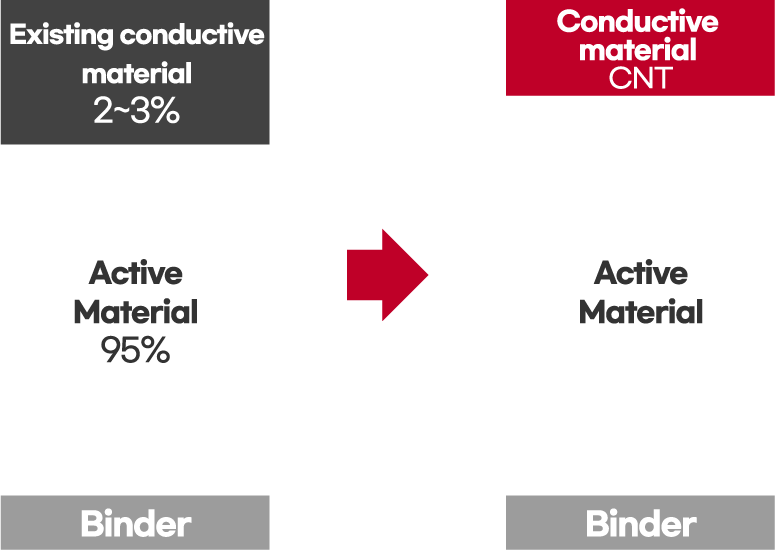
-
Amount of active material ↑, battery capacity ↑
5 times energy density compared to carbon black, conductivity 10% or more
Reduced battery charging time
Nano Silicon
-
Nano Silicon
-
Silicon
-
Nano Silicon
Silicon
-
TEM image of the
synthesized material -
EDS mapping of the
synthesized material
-
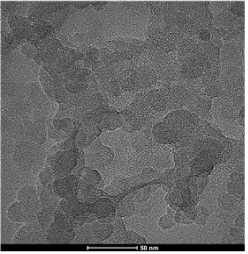
-
High Performance: High purity and small particle size
General Nano Si Powder: An average particle diameter of 50 ~ 100 nm
Prione Nano Si Powder: An average particle diameter of 20 nm or less

